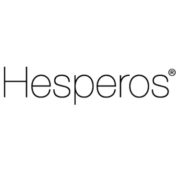Human-on-a-chip Company Hesperos Licenses First Functional Stem-Cell Derived Neuromuscular Junction Model
ORLANDO, FLA – April 25, 2018 — Hesperos, Inc. has increased its pioneering human-on-a-chip drug testing capabilities by adding a new in vitro, human-human neuromuscular model to its patented multi-organ microfluidic device systems. Abnormal function of the neuromuscular junction is associated with neurodegenerative diseases such as amyotrophic lateral sclerosis (ALS) and spinal muscular atrophy, and a human model will be critical in developing and selecting effective drugs to treat these diseases.
The breakthrough technology is described in a recent Biomaterials paper by Hesperos CSO James Hickman from the Hybrid Systems Laboratory at the University of Central Florida, “Stem cell derived phenotypic human neuromuscular junction model for dose response evaluation of therapeutics.” The technology is licensed to Hesperos, and is currently available as a fee-for-service assay.
The BioMEMs construct is the first of its kind. Unlike other tests that examine neuromuscular function in co-cultures or using biomarker activity and protein analysis, Hickman’s model is a functioning platform that recreates human neuronal connections to skeletal muscle. The compartmentalized, serum-free microfluidic device is made with thin silicone membrane with tiny tunnels. Nerve cells (motoneurons) and skeletal muscle cells (myoblasts) cultivated from human stem cells are plated on opposite sides of the membrane, creating a barrier that provides electrical and chemical isolation.
Over the course of several days, the muscle cells fuse to form muscle fibers (myotubes). The motoneurons project axons (long, slender projections that conduct electrical impulses away from the nerve cell body) through the microtunnels and form neuromuscular junctions with the myotubes. These junctions serve as conduits for communication between the two cell types, similar to what happens in the human body. The result is mini muscles that can be contracted by motoneuron activation or direct electrical stimulation.
Drugs can be applied to the model — in single doses or in several doses over an extended period of time, mimicking real drug evaluation conditions — to measure how the muscle system reacts. In the National Institutes of Health funded study, Hickman describes dose response curves his team generated for three drugs — curare toxin, alpha bungarotoxin, and an approved drug, botulinum toxin (BOTOX®).
The results closely matched in vivo (live human) data at all four stimulation frequencies tested, suggesting the model provides an extremely accurate replica of live human systems, allowing rapid, realistic, non-invasive drug testing — without the use of animals.
Hesperos has been recognized for its innovative alternatives to animal testing, including the international 2015 Lush Prize for Science. Aside from the ethical considerations of using live animal subjects to test drugs, animal testing is woefully inaccurate. For every 50 drugs that are determined to be safe for animals, only one proves safe in humans, and the FDA approval process for drugs based on animal testing is a long one.
In contrast, the functional read-outs generated by Hickman’s model have been closely correlating to what clinicians are observing in human clinical trials. This could help inform the design of future clinical trials, and accelerate drug development timelines.
“The model’s sensitivity in quantifying the degree of loss-of-function caused by neuromuscular blocking agents with varying modes of action provides a highly accurate and sensitive screening tool for new drugs,” Hickman says. “It can also allow us to observe the behavior of neuromuscular systems as a disease progresses, and inform treatment decisions based on what patients are experiencing, as they experience it.”
“Future iterations of this system with diseased motoneurons or muscle could also be used to develop drugs to treat other neuromuscular diseases,” adds Hesperos President and CEO Michael Shuler, founding Chair for the Department of Biomedical Engineering at Cornell University. “We’re excited to be able to add this capability to our human-on-a-chip toolkit.”
About Hesperos:
Hesperos, Inc, is a leader in efforts to characterize an individual’s biology with human-on-a-chip microfluidic systems. Founders Michael L. Shuler and James J. Hickman have been at the forefront of every major scientific discovery in this realm, from individual organ-on-a-chip constructs to fully functional, interconnected multi-organ systems. With a mission to revolutionize toxicology testing as well as efficacy evaluation for drug discovery, the company has created pumpless platforms with serum-free cellular mediums that allow multi-organ system communication and integrated computational modeling of live physiological responses of functional neurons, cardiac, muscle, and neuromuscular junctions as well as liver, pancreas and barrier tissues. Created from human stem cells, the fully human systems are the first in vitro solutions that accurately recreate in vivo functions without the use of animal models, as featured in Science. More information is available at http://www.hesperosinc.com
Media contact:
Michelle Linn
774-696-3803
michelle@bioscribe.com






